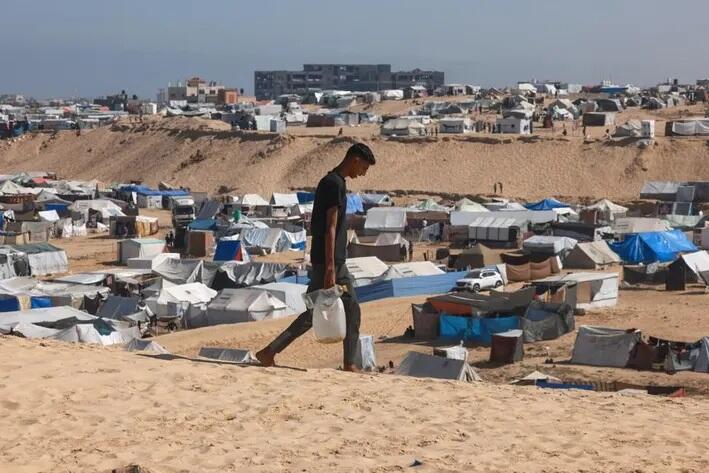Northern Gaza In Grip Of Full-Blown Famine, UN Food Agency Chief Says
Starting early last month the director of the US Agency for International Development (USAID) Samantha Power informed US lawmakers in Congress for the first time that the population in parts of northern Gaza have begun facing famine. This testimony served to hasten international efforts to more efficiently get aid into the Strip, such as the Pentagon's Gaza pier project, though it didn't put a halt of the Western weapons flowing to Tel Aviv.
Now, a top UN official has warned the crisis is worse than previously assessed. The head of the United Nations World Food Programme (WFP) Cindy McCain is now warning that northern Gaza is in the midst of a "full-blown famine".

She further said that famine is "moving its way south" in a new NBC News interview set to air Sunday. She described that this is base on the humanitarian office's assessment on the ground.
"It’s horror. It’s so hard to look at and it’s so hard to hear," McCain told Meet the Press. "What we are asking for and what we continually ask for is a ceasefire and the ability to have unfettered access, to get in safe through the various ports and gate crossings."
But a ceasefire is unlikely to come for at least a week, given that is how long Israel has just given Hamas to respond in a a fresh ultimatum. "Israel has informed Egyptian mediators that Hamas has one week to agree to a hostage deal or Tel Aviv will begin the invasion of Rafah," AntiWar.com writes. "The Israeli proposal does not offer a permanent ceasefire, and Prime Minister Benjamin Netanyahu has declared the attack on the city will occur with or without the release of hostages."
Conditions for the civilian population are expected to compound in the south if Israel's military goes through with its planned ground offensive against Rafah.
"The idea that we will halt the war before achieving all of its goals is out of the question," Prime Minister Benjamin Netanyhu told representatives of hostage families this past Tuesday. "We will enter Rafah and we will eliminate the Hamas battalions there – with or without a deal, in order to achieve the total victory."
The southern city is packed with some 1.5 million people at this point - with most of these being internally displaced refugees. But Israel says that some final key Hamas battalions and commanders are hiding out in the city, embedded within the civilian population, and that there will be no way to root them out except to send in the IDF infantry.
In her early April testimony, USAID's Power warned that "Food has not flowed in sufficient quantities to avoid this imminent famine in the south, and these conditions that are giving rise already to child deaths in the north."
"There's been significant damage during the war; bullet holes, walls missing, roofs not intact" @UNWateridge
— UNRWA (@UNRWA) May 2, 2024
Critical @UNRWA & @WFP mission to expand food distribution in north #Gaza. Agencies working closely to avert famine through meaningful supply despite massive destruction. pic.twitter.com/khMHxOU7qH
Aid officials have warned that in addition to the likelihood of mass deaths, famine would grow in the south of the Strip as well in the wake of a major Rafah assault. The population is so concentrated there that people would have few or no safe places to which to flee for safety. The US has been leaning on Israel to establish a credible civilian evacuation plan, but it's unclear the degree to which this is being realized.
NEVER MISS THE NEWS THAT MATTERS MOST
ZEROHEDGE DIRECTLY TO YOUR INBOX
Receive a daily recap featuring a curated list of must-read stories.


